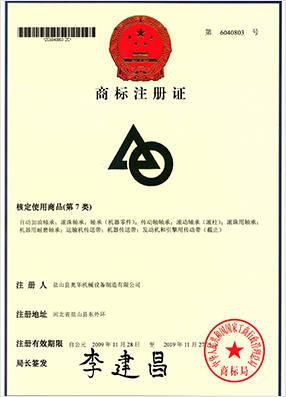 Afrikaans
Afrikaans  Albanian
Albanian  Amharic
Amharic  Arabic
Arabic  Armenian
Armenian  Azerbaijani
Azerbaijani  Basque
Basque  Belarusian
Belarusian  Bengali
Bengali  Bosnian
Bosnian  Bulgarian
Bulgarian  Catalan
Catalan  Cebuano
Cebuano  Corsican
Corsican  Croatian
Croatian  Czech
Czech  Danish
Danish  Dutch
Dutch  English
English  Esperanto
Esperanto  Estonian
Estonian  Finnish
Finnish  French
French  Frisian
Frisian  Galician
Galician  Georgian
Georgian  German
German  Greek
Greek  Gujarati
Gujarati  Haitian Creole
Haitian Creole  hausa
hausa  hawaiian
hawaiian  Hebrew
Hebrew  Hindi
Hindi  Miao
Miao  Hungarian
Hungarian  Icelandic
Icelandic  igbo
igbo  Indonesian
Indonesian  irish
irish  Italian
Italian  Japanese
Japanese  Javanese
Javanese  Kannada
Kannada  kazakh
kazakh  Khmer
Khmer  Rwandese
Rwandese  Korean
Korean  Kurdish
Kurdish  Kyrgyz
Kyrgyz  Lao
Lao  Latin
Latin  Latvian
Latvian  Lithuanian
Lithuanian  Luxembourgish
Luxembourgish  Macedonian
Macedonian  Malgashi
Malgashi  Malay
Malay  Malayalam
Malayalam  Maltese
Maltese  Maori
Maori  Marathi
Marathi  Mongolian
Mongolian  Myanmar
Myanmar  Nepali
Nepali  Norwegian
Norwegian  Norwegian
Norwegian  Occitan
Occitan  Pashto
Pashto  Persian
Persian  Polish
Polish  Portuguese
Portuguese  Punjabi
Punjabi  Romanian
Romanian  Russian
Russian  Samoan
Samoan  Scottish Gaelic
Scottish Gaelic  Serbian
Serbian  Sesotho
Sesotho  Shona
Shona  Sindhi
Sindhi  Sinhala
Sinhala  Slovak
Slovak  Slovenian
Slovenian  Somali
Somali  Spanish
Spanish  Sundanese
Sundanese  Swahili
Swahili  Swedish
Swedish  Tagalog
Tagalog  Tajik
Tajik  Tamil
Tamil  Tatar
Tatar  Telugu
Telugu  Thai
Thai  Turkish
Turkish  Turkmen
Turkmen  Ukrainian
Ukrainian  Urdu
Urdu  Uighur
Uighur  Uzbek
Uzbek  Vietnamese
Vietnamese  Welsh
Welsh  Bantu
Bantu  Yiddish
Yiddish  Yoruba
Yoruba  Zulu
Zulu take-up pulley
Understanding the Importance of the Take-up Pulley
In the world of mechanical engineering and conveyor systems, the take-up pulley plays a crucial role that often goes unnoticed. This component may seem modest in appearance, but its functionality is paramount in ensuring the smooth operation of conveyor belts. The importance of the take-up pulley can be understood in terms of its purpose, types, and maintenance requirements.
What is a Take-up Pulley?
A take-up pulley is used in a conveyor system to maintain tension on the conveyor belt. It is an essential component that helps adjust the length of the belt, allowing for optimal functionality. As belts wear down or elongate over time, the take-up pulley allows for adjustments to be made, ensuring that the belt remains taut. This function prevents slipping, misalignment, and potential damage to the belt or the conveyor system itself.
Types of Take-up Pulleys
There are several types of take-up pulleys, with each serving specific applications and environments. The two most common types are
1. Manual Take-up Pulleys These require physical adjustments to maintain the correct tension. While more labor-intensive, manual take-up systems can be more customizable depending on the operational requirements.
2. Automatic Take-up Pulleys These systems utilize mechanisms such as weights or springs to automatically adjust tension as needed. This type of take-up pulley offers a significant advantage in terms of efficiency, as it can adapt to changes in the conveyor belt without human intervention.
Benefits of Using Take-up Pulleys
The implementation of take-up pulleys in conveyor systems offers numerous benefits
. Here are some of the key advantages1. Tension Maintenance One of the primary functions of a take-up pulley is to maintain the necessary tension on the belt, which is crucial for proper operation. Adequate tension can prevent slippage and extend the lifespan of the conveyor system.
take-up pulley

2. Reduced Wear and Tear By allowing for quick adjustments, take-up pulleys help minimize wear on the belt and other components of the conveyor system. This leads to reduced maintenance costs and a lower likelihood of significant repairs.
3. Improved Efficiency Automatic take-up pulleys, in particular, enhance operational efficiency. By continuously adjusting tension, these pulleys ensure that the conveyor belt runs smoothly, reducing downtime and maintaining productivity.
4. Flexibility in Design Take-up pulleys can be designed in various ways to accommodate different types of conveyor systems and operational environments, making them a versatile choice for many industries.
Maintenance and Best Practices
Like any mechanical component, take-up pulleys require regular maintenance to function effectively. Here are some best practices for keeping take-up pulleys in good condition
1. Routine Inspections Regularly inspect the take-up pulleys for signs of wear or damage. Look for abnormalities in the tensioning mechanism and ensure that the pulley can still move freely.
2. Check Alignment Misalignment can lead to uneven wear on the conveyor belt. Adjust the take-up pulley as needed to ensure proper alignment and tension distribution.
3. Lubrication If the pulley system contains moving parts, regular lubrication is necessary to reduce friction and wear. Ensure that appropriate lubricants are used according to manufacturer specifications.
4. Keep it Clean Dirt and debris can interfere with the mechanical function of the take-up pulley. Regular cleaning helps maintain its efficiency and performance.
Conclusion
The take-up pulley is a small but vital component in conveyor systems. Its ability to maintain tension, reduce wear, and improve operational efficiency highlights its importance in various industries, from manufacturing to mining. Proper understanding and maintenance of take-up pulleys can lead to enhanced longevity and performance of conveyor systems, ensuring smooth and effective operations. As industries continue to evolve, the role of take-up pulleys will remain significant, reinforcing their place in the engineering landscape.
-
Revolutionizing Conveyor Reliability with Advanced Rubber Lagging PulleysNewsJul.22,2025
-
Powering Precision and Durability with Expert Manufacturers of Conveyor ComponentsNewsJul.22,2025
-
Optimizing Conveyor Systems with Advanced Conveyor AccessoriesNewsJul.22,2025
-
Maximize Conveyor Efficiency with Quality Conveyor Idler PulleysNewsJul.22,2025
-
Future-Proof Your Conveyor System with High-Performance Polyurethane RollerNewsJul.22,2025
-
Driving Efficiency Forward with Quality Idlers and RollersNewsJul.22,2025





























